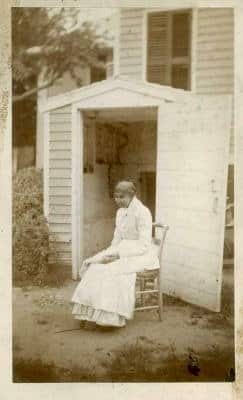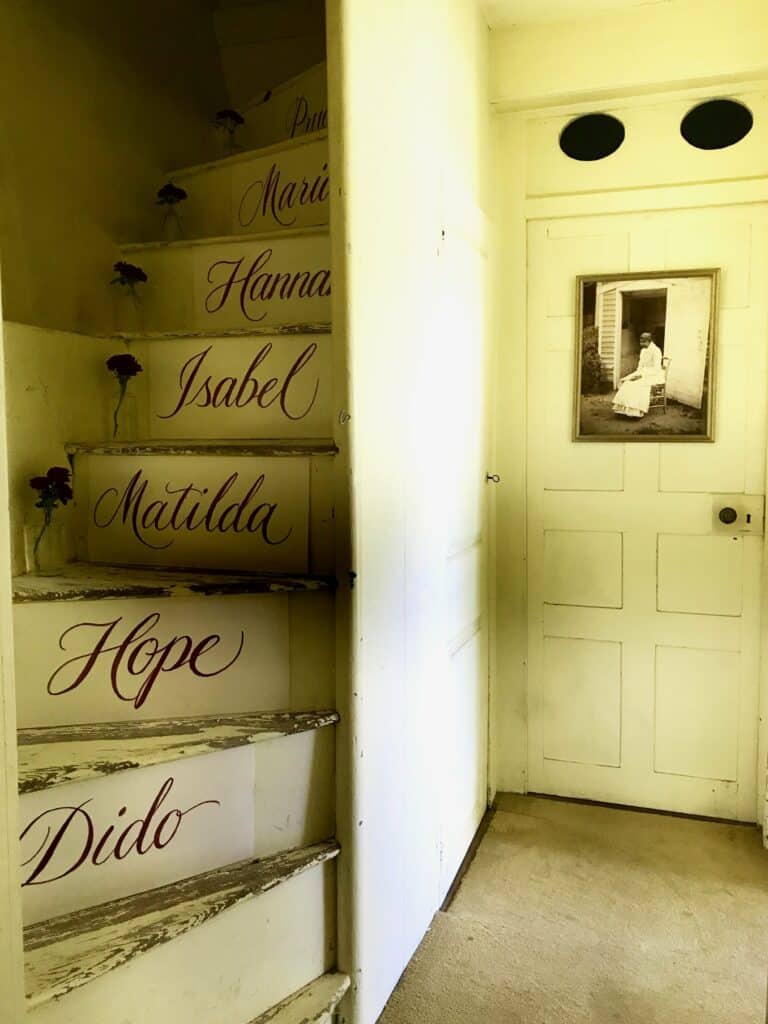In 1652, Nathaniel Sylvester and his business partners arrived on Shelter Island to begin the establishment of their provisioning plantation. They had purchased the island the previous year from Connecticut merchant Stephen Goodyear for 1600 lbs of sugar brought from their Barbados plantations. A legal agreement had also been reached with the Manhansett Native People for the “ownership” of the land. Their plans included clearing the forest for crop cultivation and using the oak timber for making staves for barrels, raising livestock and the construction of a sizable house.
The workers who would undertake this plan of labor were enslaved African men and women transported from Barbados as well as indentured Irish men. We have no documented record of how many enslaved people first arrived on the island or what their names and origins were, but evidence found during archaeological excavations indicates that the 17th century settlement on Shelter Island was an active commercial site with food production, building in abundance and populated with a mix of cultures. Skilled workers were needed to clear the land, plant crops, lay the stone boulder wall and construct the first Manor House that consisted of six or seven rooms as well as out-buildings such as the warehouse, barns, salt house and brick works.
Our primary source of information regarding the original enslaved Africans of Sylvester Manor is the 1680 Last Will & Testament of Nathaniel Sylvester where he lists the 24 people held in bondage that he bequeaths to his wife Grizzell and their children. They are grouped as families – husbands, wives and their children. Hannah, Jacquero and their daughter Hope arrived in 1653 with Grizzell soon after she and Nathaniel married, and they remained enslaved to her for the rest of their lives. Their daughter Isabell who was born on Shelter Island was among the first generation of African descended children born at the Manor.
Over the next four generations, slavery continued at Sylvester Manor, however their numbers never again were as high as during Nathaniel’s time. Using documented evidence such as last wills and testaments, inventories, family letters and church records, we have been able to uncover the names and identities of most of the enslaved men, women and children who lived, worked and died at Sylvester Manor. Today our research continues as we work to follow these individuals and families generationally from Slavery to Freedom.
In 1737 when Brinley Sylvester, Nathaniel’s grandson, built the second Manor House, the enslaved people lived and worked in the attic of the house making their lives as best they could in the spaces there. They traveled up and down the steep and winding back staircase known as the “Slaves Staircase” by family members, caring for the furniture and artifacts as well as tending to the cooking, cleaning, laundry and day to day duties of the house. The last enslaved person manumitted at the Manor was a Black man named London who was born at Sylvester Manor and was granted his freedom by Esther Sarah Dering in 1820. He continued to live and work on Shelter Island and is buried in the Afro-Indigenous Burial Ground.
Today, as we tour the Manor House rooms still filled with remnants from the 18th & 19th century, we can feel the presence of the Enslaved and Free People of Color of Sylvester Manor as we tell the stories and history of the house and family. We regard and honor them as Ancestors of the Place.

Hannah, Jacquero, Hope & Isabell
The first African family of Shelter Island was brought to Sylvester Manor by Grizzell Brinley in 1652 as enslaved people. Learn more…
Tammero, Oyou and Obium
In the Last Will and Testament of Nathaniel Sylvester dated 1680, an enslaved family is listed – “Tammero (male) and Oyou (female); children, Obium (son), Tom, unnamed child, unnamed child.” Learn more…
The Daughters of Judah
We have uncovered the lives and history of a family of four generations of women who all lived and worked at Sylvester Manor at some point in their lives, tracing them from slavery to freedom to burial in the Afro-Indigenous Burial Ground on Manor property. Learn more…
Comus and Dido Fanning
Manumitted in 1796, Comus Fanning eventually saved enough money to purchase twenty-one and three-quarter acres of land near the Manor. He and his wife Dido, who was enslaved by Nicoll Havens on Shelter Island, lived on the land, along with Dido’s daughter, Julia Dyd Havens, who was born free ca. 1815. Learn more…

Julia Dyd Havens Johnson
Julia Dyd Havens Johnson was a free mixed-raced woman born on Shelter Island c. 1808. Her mother Dido, a free woman at the time of her birth, had formerly been enslaved in the household of Nicoll Havens, also of Shelter Island. Learn more…
Pharaoh Brothers
In November 1829, two young boys, Issac and William Pharaoh, were brought to Sylvester Manor by their mother, to be placed in indentured servitude. Learn more…
David Hempstead Sr.
David H. Hempstead Sr. died in November 1843. At the time of his death he was the owner of a 95 acre farm near West Neck on Shelter Island. Owning the farm was the culmination of a long life of work. Learn more…
Post Office Box 2029
80 North Ferry Road
Shelter Island, NY 11964 info@sylvestermanor.org 631.749.0626